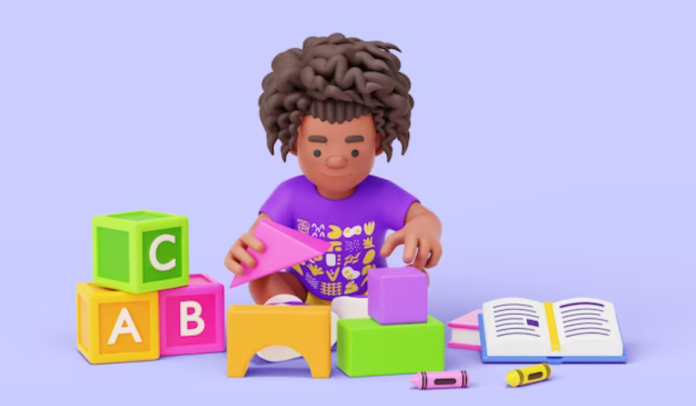In an age where technology plays an increasingly prominent role in our lives, teaching children coding skills has become more important than ever. Coding toys for kids offer a fun and interactive way to introduce young learners to the fundamentals of programming, problem-solving, and computational thinking. In this comprehensive guide, we delve into the latest advancements in coding toys for kids, exploring their features, benefits, and educational value.
1. Introduction to Coding Toys for Kids
Coding toys for kids are educational tools designed to teach children the basics of coding and programming in a playful and engaging manner. These toys often feature colorful blocks, programmable robots, interactive games, and easy-to-use interfaces that make learning to code accessible and enjoyable for children of all ages. By introducing coding concepts early on, these toys help foster creativity, critical thinking, and problem-solving skills in young learners, preparing them for success in an increasingly digital world.
2. Benefits of Coding Toys for Kids
Coding toys offer a range of benefits for children, including:
- Promoting STEM Learning: Coding toys introduce children to concepts in science, technology, engineering, and mathematics (STEM) in a hands-on and interactive way, sparking interest in these subjects from an early age.
- Developing Problem-Solving Skills: By experimenting with coding blocks and programming robots, children learn to break down complex problems into smaller, more manageable tasks and develop strategies to solve them.
- Encouraging Creativity: Coding toys provide a creative outlet for children to express themselves through coding and programming, allowing them to design and create their own projects and games.
- Building Persistence and Resilience: Coding requires patience and perseverance, as children iterate on their designs, debug their code, and overcome challenges along the way, fostering resilience and a growth mindset.
- Preparing for Future Careers: As technology continues to shape the world, coding skills are increasingly in demand across various industries. By learning to code at a young age, children gain valuable skills that can open doors to future career opportunities.
3. Types of Coding Toys
There is a wide variety of coding toys available on the market, catering to different age groups, skill levels, and interests. Some popular types of coding toys include:
- Coding Blocks and Puzzles: These toys feature colorful blocks or tiles with programming commands that children can arrange to create sequences of instructions for characters or robots to follow.
- Programmable Robots: Programmable robots come in various forms, from simple floor robots to advanced robotic kits. Children can program these robots to perform tasks, navigate mazes, or complete challenges using coding languages or visual programming interfaces.
- Interactive Games and Apps: Many coding toys are paired with interactive games or apps that teach coding concepts through gamified experiences. These games often feature engaging storylines, puzzles, and challenges that encourage children to experiment with coding and problem-solving.
4. Features to Consider
When choosing a coding toy for your child, consider the following features:
- Age Appropriateness: Look for toys that are suitable for your child’s age and skill level, with clear instructions and intuitive interfaces that make learning to code accessible and enjoyable.
- Programming Languages: Some coding toys use visual programming languages, while others introduce children to text-based coding languages. Choose a toy that aligns with your child’s interests and future learning goals.
- Compatibility: Check if the coding toy is compatible with your devices, such as smartphones, tablets, or computers, and whether it requires additional accessories or subscriptions to access all features.
- Safety and Durability: Ensure that the coding toy is made from high-quality materials and meets safety standards, especially if it includes small parts or electronic components that could pose a choking hazard.
5. Popular Coding Toys for Kids
Several coding toys have gained popularity among parents, educators, and children alike:
- LEGO Boost: LEGO Boost combines the classic building blocks with motors, sensors, and a programmable hub, allowing children to build and code their own interactive robots and creations.
- Osmo Coding: Osmo Coding uses physical blocks and an iPad app to teach coding concepts through interactive games and challenges, fostering creativity and problem-solving skills.
- Sphero SPRK+: Sphero SPRK+ is a programmable robotic ball that children can control and program using a smartphone or tablet app, learning coding fundamentals while exploring STEM concepts.
- Botley 2.0: Botley 2.0 is a screen-free coding robot that introduces children to coding through hands-on activities and challenges, promoting critical thinking and logical reasoning skills.
6. Educational Applications
Coding toys have found their way into classrooms and educational settings, where they serve as valuable tools for teaching coding and computational thinking skills. Educators incorporate coding toys into lesson plans and STEM curricula to engage students in hands-on learning experiences that promote creativity, collaboration, and problem-solving. By integrating coding toys into education, schools prepare students for future careers in technology and equip them with essential skills for success in the digital age.
FAQs (Frequently Asked Questions)
Q: At what age can children start learning to code with coding toys?
A: Children as young as preschool age can begin learning basic coding concepts with age-appropriate coding toys that use visual programming languages and simple instructions. As children grow older and develop more advanced skills, they can progress to toys that introduce text-based coding languages and more complex programming concepts.
Q: Do coding toys require a computer or tablet to use?
A: Some coding toys require a computer, tablet, or smartphone to program and control them, while others are self-contained and do not require additional devices. Check the specifications of the coding toy to determine its compatibility and any additional requirements for use.
Q: Can coding toys help children with special needs or learning differences?
A: Yes, coding toys can be beneficial for children with special needs or learning differences, as they offer a multisensory approach to learning that accommodates different learning styles and abilities. Many coding toys can be adapted to meet the needs of children with disabilities and provide inclusive learning experiences.
Conclusion
Coding toys for kids offer a fun, interactive, and educational way to introduce children to the world of coding and programming. By engaging in hands-on activities with coding toys, children develop essential skills such as problem-solving, critical thinking, and creativity, preparing them for success in an increasingly digital world. With a wide range of coding toys available, parents, educators, and children have ample opportunities to explore coding concepts in a playful and engaging manner, unlocking the potential for lifelong learning and innovation. As technology continues to advance, coding toys will continue to evolve, inspiring the next generation of coders, engineers, and innovators to
shape the future with their creativity and imagination.


